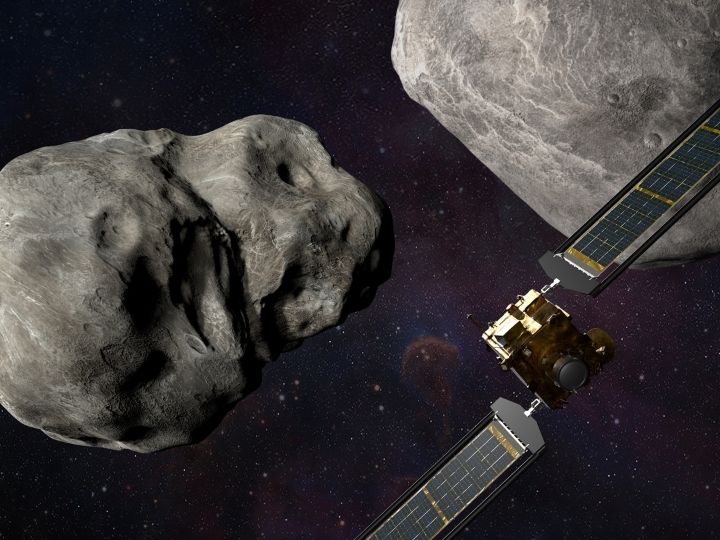News Highlight
NASA’s Double Asteroid Redirection Test (DART) is a spacecraft that successfully crashed into the asteroid Dimorphos.
Key Takeaway,
- With the collision, humanity’s first planetary defence test was completed successfully.
The DART mission
- About
- DART is the first technology demonstration of the kinetic impactor technique that could be used to mitigate the threat of an asteroid hitting Earth.
- Configuration:
- The DART weighs about 610 KG.
- It has two solar arrays and uses hydrazine propellant for manoeuvring the spacecraft.
- The spacecraft has been appended with a high-resolution imager called Didymos Reconnaissance and Asteroid Camera for Optical Navigation (DRACO).
- DART carried a small satellite or CubeSat named LICIACube (Light Italian CubeSat for Imaging of Asteroids).
Dimorphos
- The DART targeted Dimorphos, the smaller “moonlet” of a binary (two-body) asteroid system.
- Dimorphos orbits a larger asteroid named Didymos (Greek for “twin”), which has a diameter of 780 metres.
- Why Dimorphos?
- Dimorphos is a perfect system for the test mission because it is an eclipsing binary which means it has a moonlet that regularly orbits the asteroid. It can be seen when it passes in front of the main asteroid.
- Earth-based telescopes can study this variation in brightness to understand how long it takes Dimorphos to orbit Didymos.
Asteroids
- Asteroids, sometimes called minor planets, are rocky, airless remnants left over from the early formation of the solar system about 4.6 billion years ago.
- Most of this ancient space rubble can be found orbiting the Sun between Mars and Jupiter within the central asteroid belt.
- Some asteroids go in front of and behind Jupiter, which are called the Trojans.
- Asteroids that come close to Earth are called Near-Earth Objects (NEOs) for short.
- Most asteroids are made of different kinds of rocks, but some have clay or metals, such as nickel and iron.
Pic Courtesy: BBC and ABP Live
Content Source: Indian Express



